Abstract
The fluctuation of populations of Dictyocaulus filaria in sheep was studied under field conditions in which animals are housed during the winter and grazed from late spring to autumn. A comparison was made between residual pasture contamination with overwintered larvae, the fecal larval deposition by ewes from June and both of these factors combined as sources of infection for spring born lambs. Ewes and lambs were killed serially over a year and worms were recovered from the lungs and counted. It was found that during the stabling period most of the ewes were carrying moderate numbers of D. filaria. However, while the vast majority of lungworm populations in the winter was inhibited in development at the early fifth larval stage, virtually all worms in the spring were adults. Any one source of infection studied contributed to the acquisition of important burdens of D. filaria by lambs as well as ewes. Worm counts reached peak in all lambs by November and this pointed to only one important Dictyocaulus generation per grazing season. It would also appear that larvae picked up by ewes and lambs as the grazing season advanced had become inhibited in development with the inhibition rate being most marked in autumn.
Full text
PDF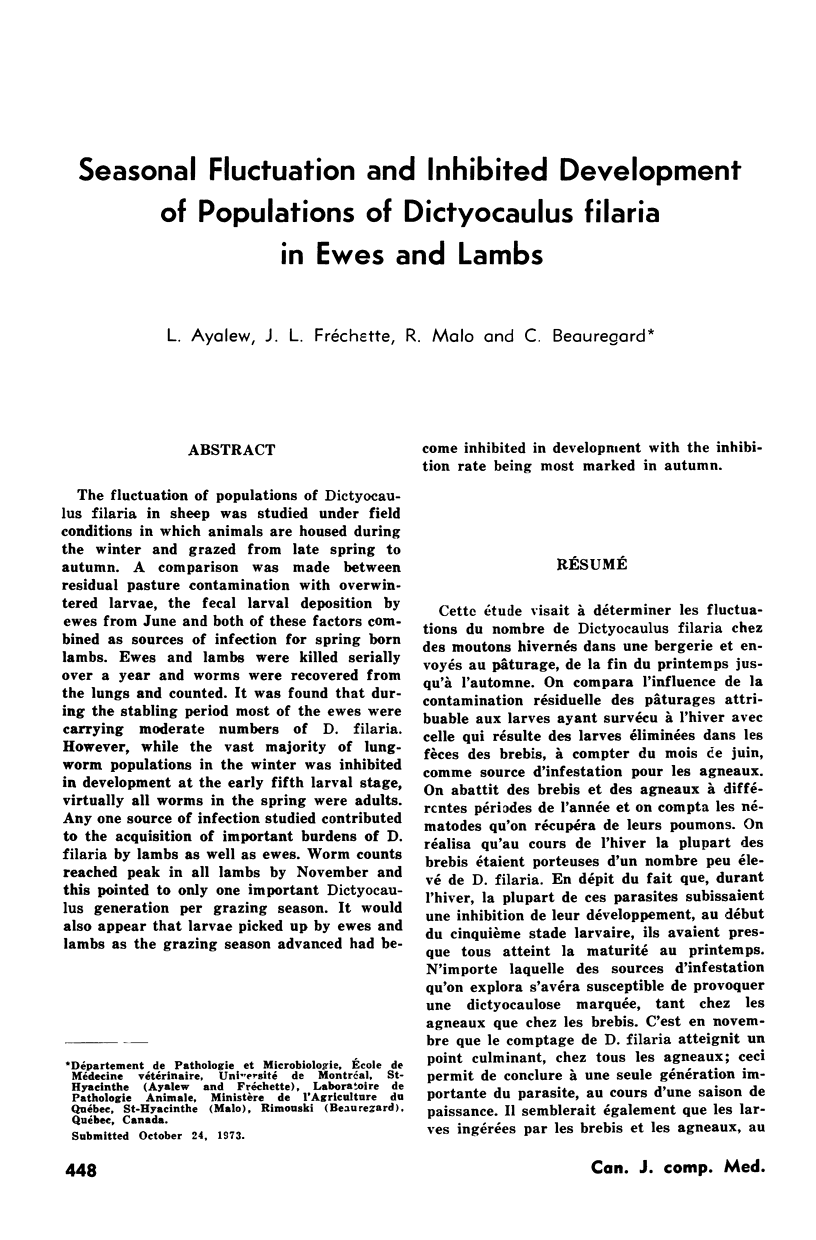

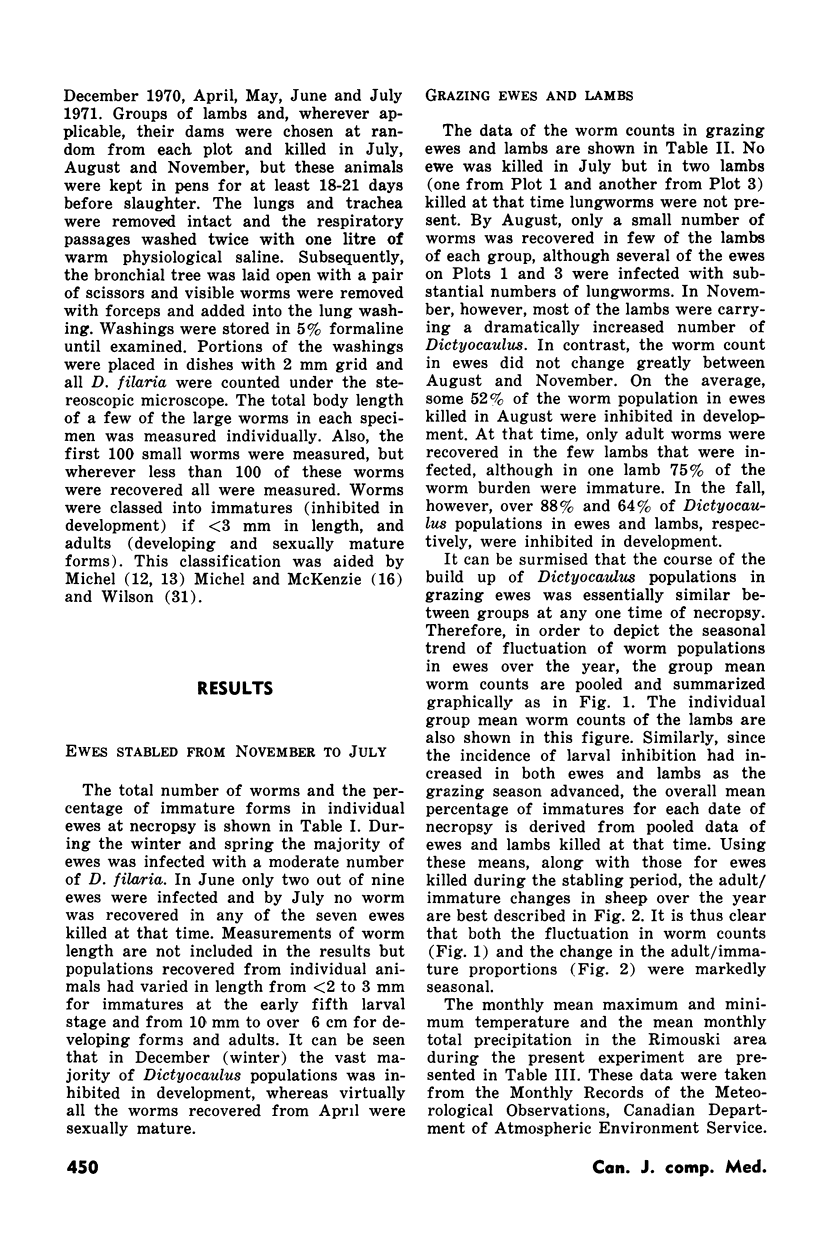
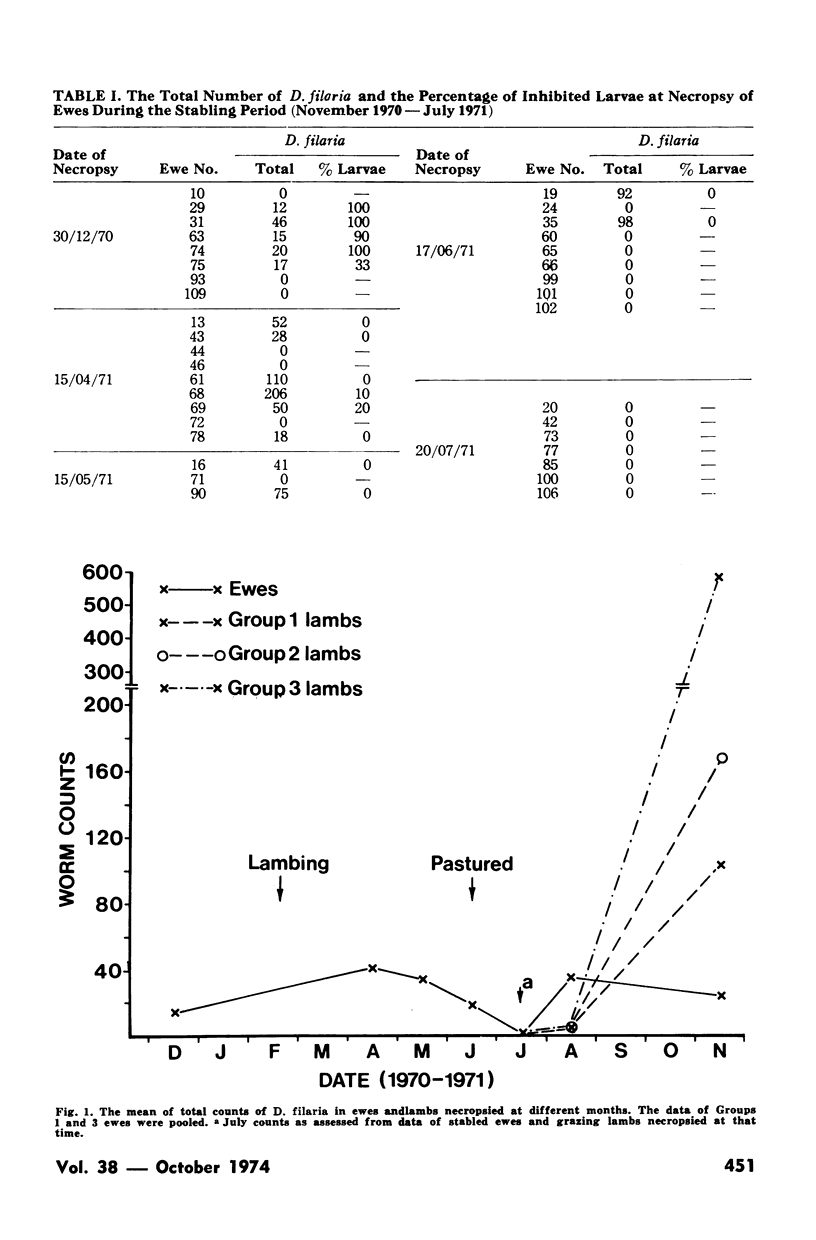
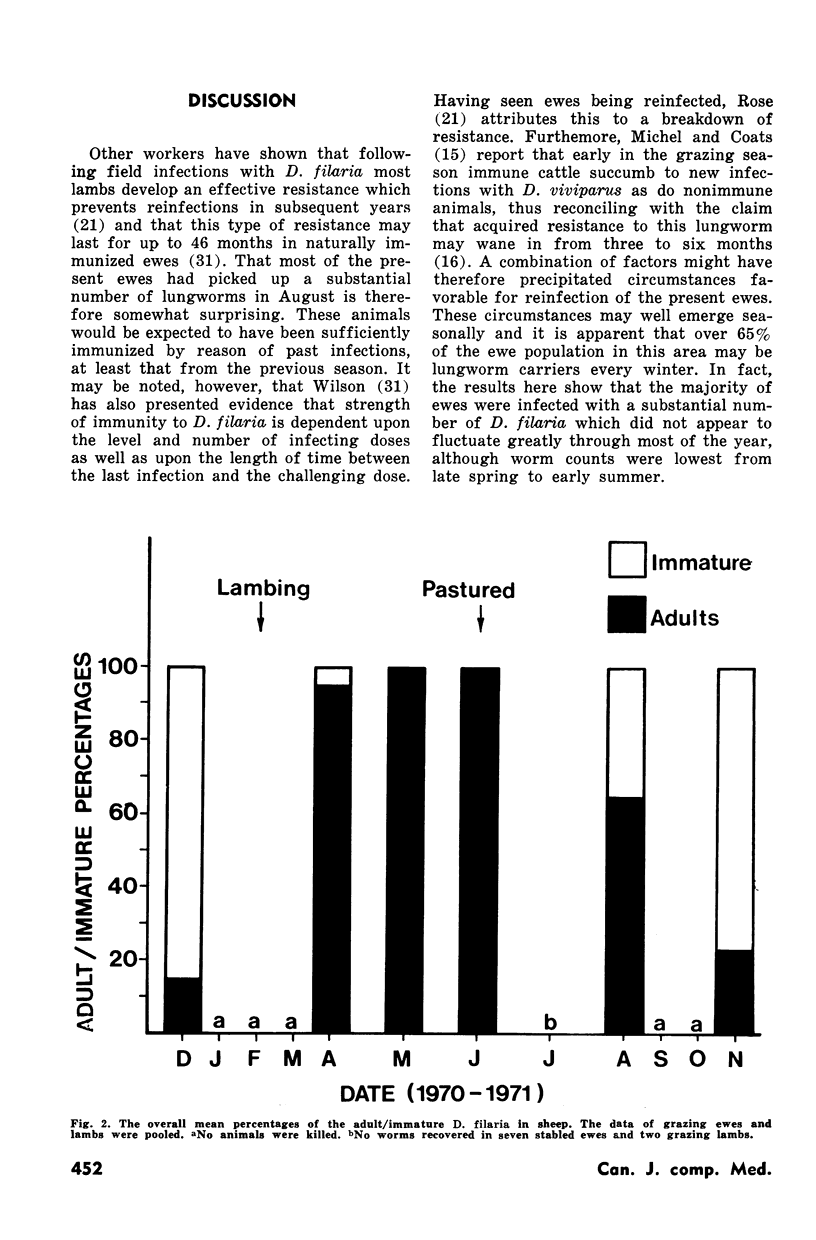
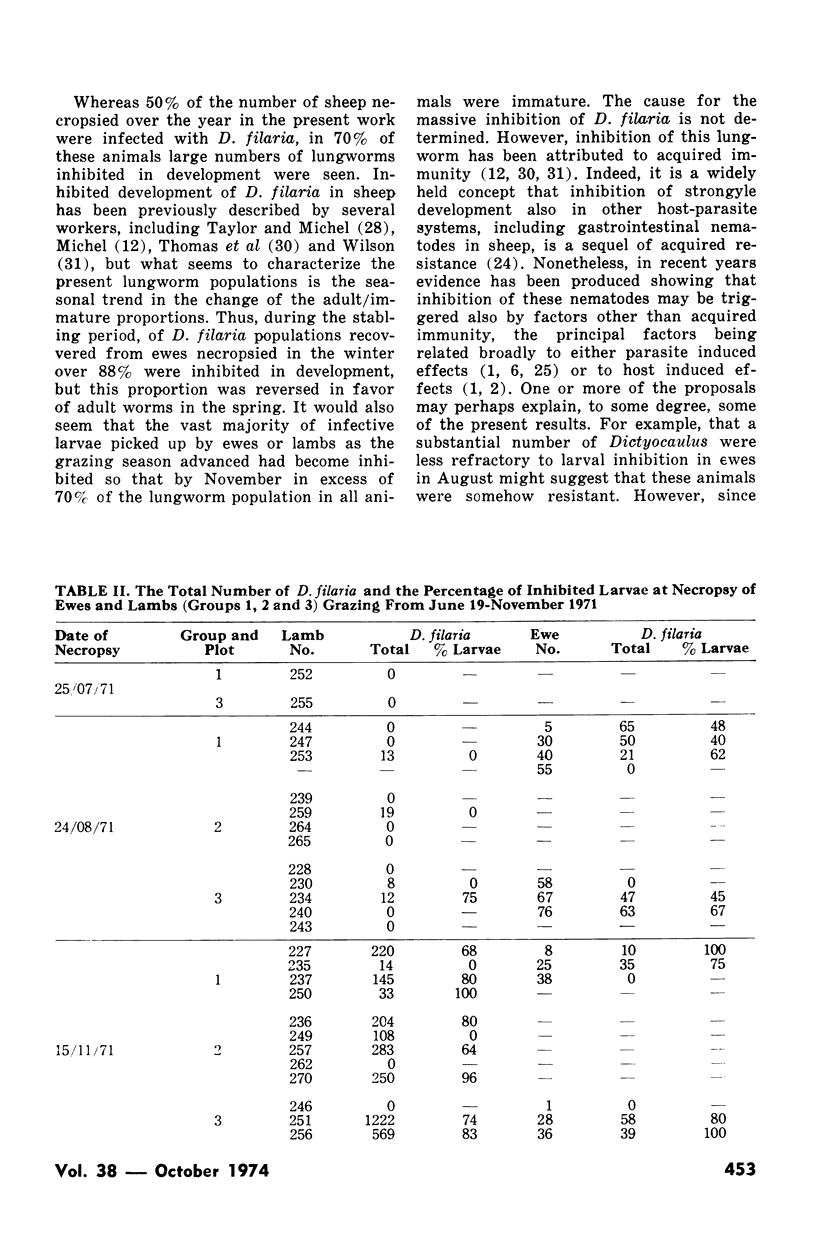
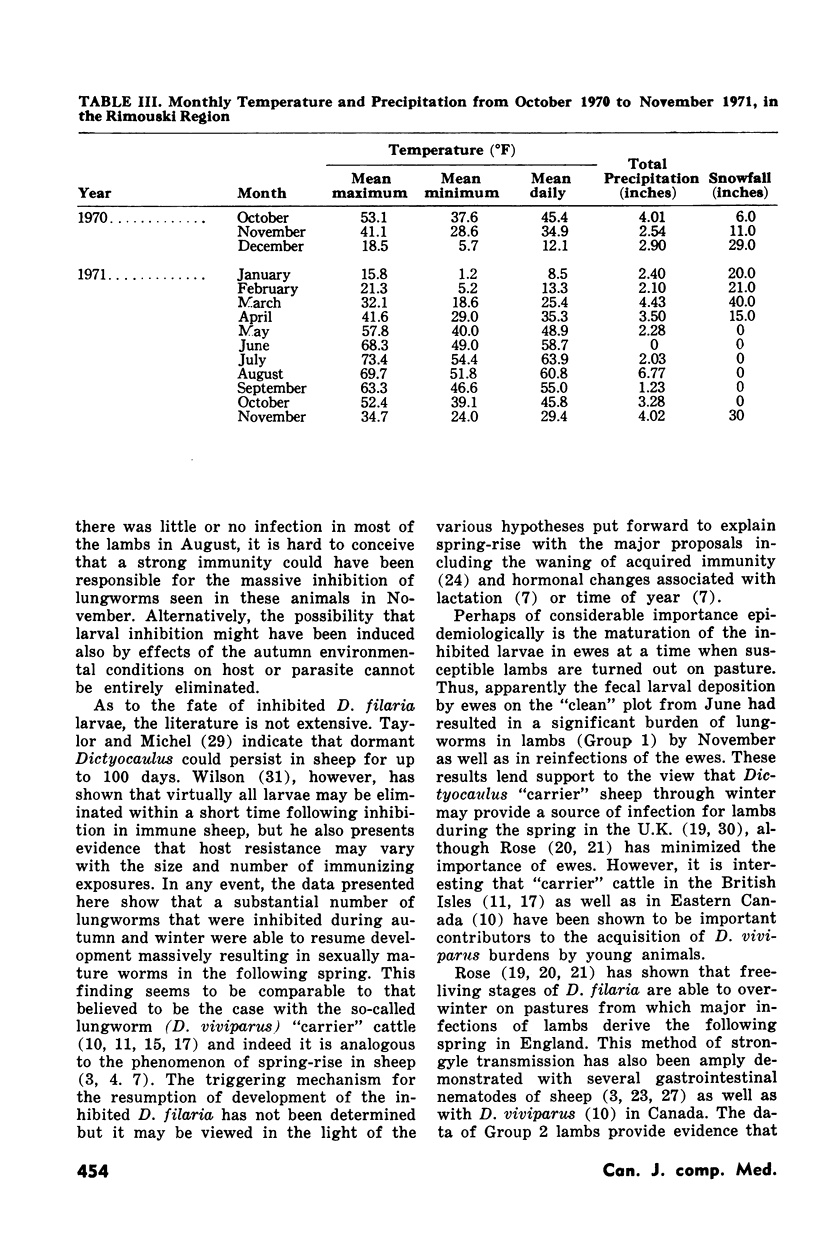
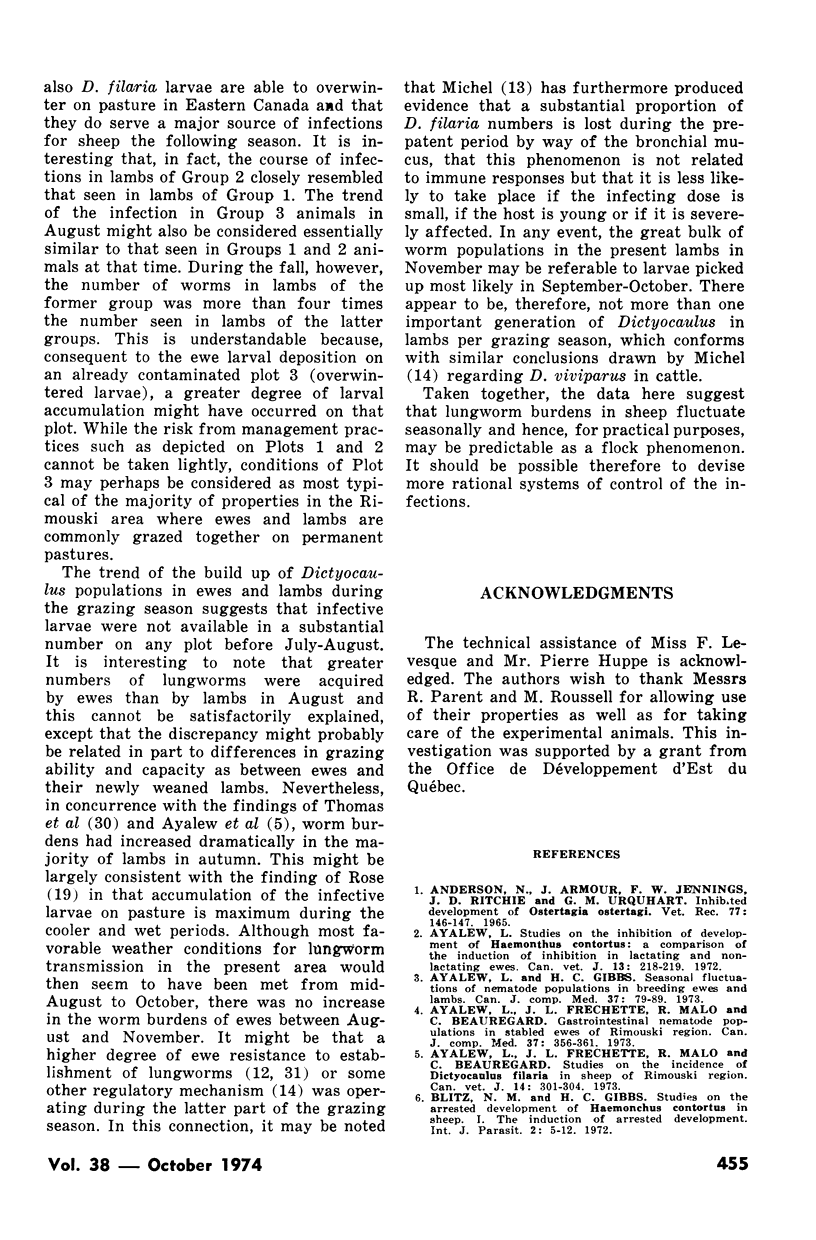
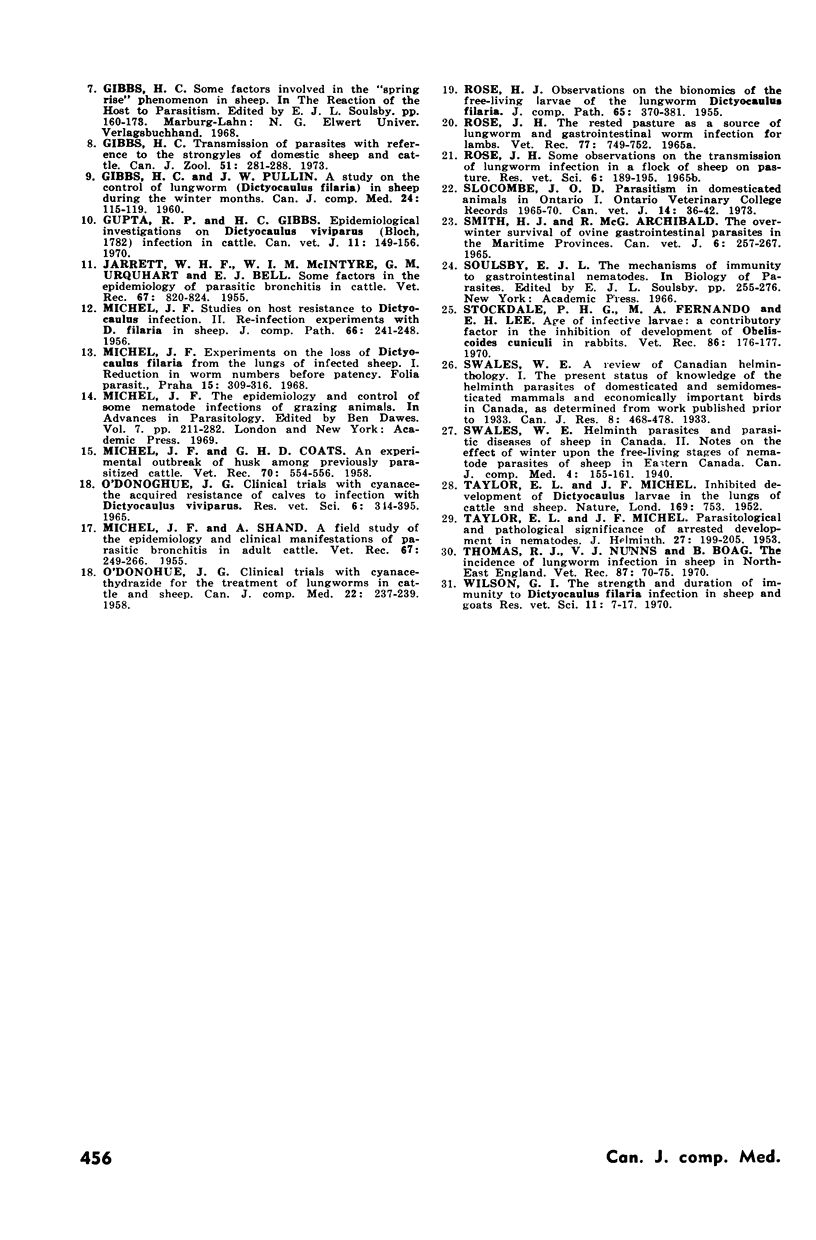
Selected References
These references are in PubMed. This may not be the complete list of references from this article.
- ANDERSON N., ARMOUR J., JENNINGS F. W., RITCHIE J. D., URQUHART G. M. INHIBITED DEVELOPMENT OF OSTERTAGIA OSTERTAGI. Vet Rec. 1965 Jan 30;77:146–147. [PubMed] [Google Scholar]
- Ayalew L., Fréchette J. L., Malo R., Beauregard C. Gastrointestinal nematode populations in stabled ewes of Rimouski region. Can J Comp Med. 1973 Oct;37(4):356–361. [PMC free article] [PubMed] [Google Scholar]
- Ayalew L., Fréchette J. L., Malo R., Beauregard C. Studies on the incidence of Dictyocaulus filaria in sheep of Rimouski Region. Can Vet J. 1973 Dec;14(12):301–304. [PMC free article] [PubMed] [Google Scholar]
- Ayalew L., Gibbs H. C. Seasonal fluctuations of nematode populations in breeding ewes and lambs. Can J Comp Med. 1973 Jan;37(1):79–89. [PMC free article] [PubMed] [Google Scholar]
- Blitz N. M., Gibbs H. C. Studies on the arrested development of Haemonchus contortus in sheep. I. The induction of arrested development. Int J Parasitol. 1972 Mar;2(1):5–12. doi: 10.1016/0020-7519(72)90028-8. [DOI] [PubMed] [Google Scholar]
- Gibbs H. C., Pullin J. W. A Study of the Control of Lungworm (Dictyocaulus Filaria) in Sheep During the Winter Months. Can J Comp Med Vet Sci. 1960 Apr;24(4):115–119. [PMC free article] [PubMed] [Google Scholar]
- Gibbs H. C. Transmission of parasites with reference to the strongyles of domestic sheep and cattle. Can J Zool. 1973 Feb;51(2):281–289. doi: 10.1139/z73-040. [DOI] [PubMed] [Google Scholar]
- Gupta R. P., Gibbs H. C. Epidemiological investigations on Dictyocaulus viviparus (Bloch, 1782) infection in cattle. Can Vet J. 1970 Aug;11(8):149–156. [PMC free article] [PubMed] [Google Scholar]
- MICHEL J. F. Studies on host resistance to Dictyocaulus infection. II. Re-infection experiments with D. filaria in sheep. J Comp Pathol. 1956 Jul;66(3):241–248. doi: 10.1016/s0368-1742(56)80025-8. [DOI] [PubMed] [Google Scholar]
- Michel J. F. The epidemiology and control of some nematode infections of grazing animals. Adv Parasitol. 1969;7:211–282. doi: 10.1016/s0065-308x(08)60436-4. [DOI] [PubMed] [Google Scholar]
- O'donoghue J. G. Clinical Trials With Cyanacethydrazide For The Treatment Of Lungworms In Cattle And Sheep. Can J Comp Med Vet Sci. 1958 Jul;22(7):237–239. [PMC free article] [PubMed] [Google Scholar]
- ROSE J. H. Observations on the bionomics of the free-living larvae of the lungworm Dictyocaulus filaria. J Comp Pathol. 1955 Oct;65(4):370–381. doi: 10.1016/s0368-1742(55)80037-9. [DOI] [PubMed] [Google Scholar]
- ROSE J. H. SOME OBSERVATIONS ON THE TRANSMISSION OF LUNGWORM INFECTION IN A FLOCK OF SHEEP AT PASTURE. Res Vet Sci. 1965 Apr;6:189–195. [PubMed] [Google Scholar]
- ROSE J. H. THE RESTED PASTURE AS A SOURCE OF LUNGWORM AND GASTRO-INTESTINAL WORM INFECTION FOR LAMBS. Vet Rec. 1965 Jun 26;77:749–752. [PubMed] [Google Scholar]
- Slocombe J. O. Parasitisms in domesticated animals in Ontario. I. Ontario Veterinary College Records 1965-70. Can Vet J. 1973 Feb;14(2):36–42. [PMC free article] [PubMed] [Google Scholar]
- Smith H. J., Aarchibald R. M. The overwinter survival of ovine gastro-intestinal parasites in the Maritime provinces. Can Vet J. 1965 Oct;6(10):257–267. [PMC free article] [PubMed] [Google Scholar]
- Stockdale P. H., Fernando M. A., Lee E. H. Age of infective larvae: a contributory factor in the inhibition of development of Obeliscoides cuniculi in rabbits. Vet Rec. 1970 Feb 7;86(6):176–177. doi: 10.1136/vr.86.6.176. [DOI] [PubMed] [Google Scholar]
- Swales W. E. Helminth Parasites and Parasitic Diseases of Sheep: II. Notes on the Effect of Winter Upon the Free-living Stages of Nematode Parasites of Sheep on the Pastures in Eastern Canada. Can J Comp Med Vet Sci. 1940 Jun;4(6):155–161. [PMC free article] [PubMed] [Google Scholar]
- TAYLOR E. L., MICHEL J. F. Inhibited development of Dictyocaulus larvae in the lungs of cattle and sheep. Nature. 1952 May 3;169(4305):752–753. doi: 10.1038/169753a0. [DOI] [PubMed] [Google Scholar]
- Thomas R. J., Nunns V. J., Boag B. The incidence of lungworm infection in sheep in North-East England. Vet Rec. 1970 Jul 18;87(3):70–75. doi: 10.1136/vr.87.3.70. [DOI] [PubMed] [Google Scholar]
- Wilson G. I. The strength and duration of immunity to Dictyocaulus filaria infection in sheep and goats. Res Vet Sci. 1970 Jan;11(1):7–17. [PubMed] [Google Scholar]


